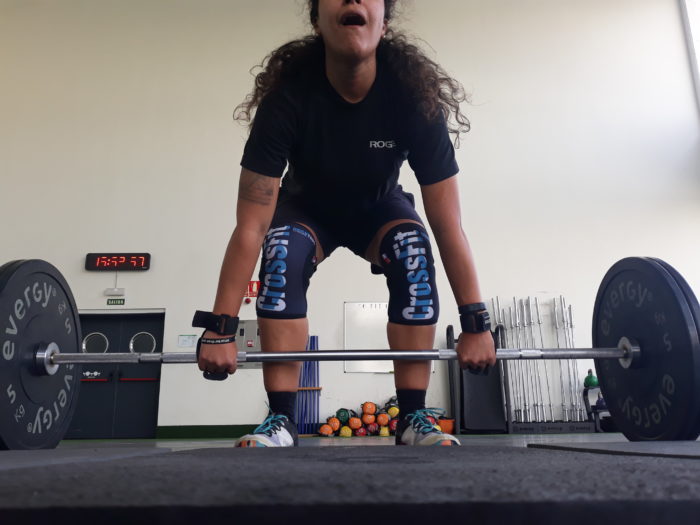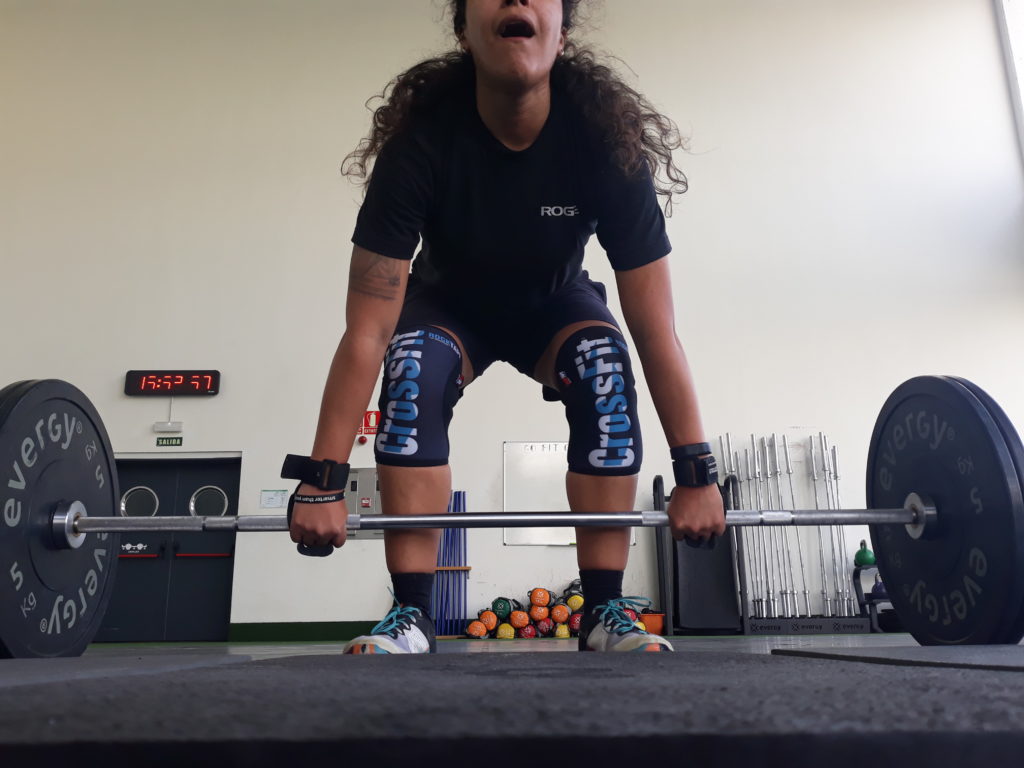La personalidad de un crossfitero
Probablemente hayamos leído todos artículos sobre qué tipo de personalidad podemos encontrarnos en el box:
- El macho alfa que lanza la barra al suelo y grita más alto que cualquier otro
- El atleta que no completa sus repeticiones pero, inexplicablemente, tiene siempre la mejor puntuación
- Ese otro atleta que actúa como tu entrenador y te corrige la técnica de sentadilla pero no sabe hacer una sentadilla overhead sin que se le metan las rodillas dentro.
Pero la personalidad es algo mucho más complejo. Costa y McCrae (1995) lo conceptualizaron como un constructo que acoge “estilos de pensar, sentir y actuar relativamente estables”. La personalidad es revelada a través de los rasgos que se han categorizado de miles de maneras para intentar darles una definición universal.
Cómo afecta la personalidad a la práctica deportiva
La categorización que ha recibido más aceptación es aquella proporcionada por los mismos Costa y McCrae (1992) que incluye cinco dimensiones: apertura a la experiencia, responsabilidad, extroversión, amabilidad y neuroticismo. La influencia de la personalidad se ha estudiado extensivamente en relación a muchos aspectos de la vida de un individuo, incluido el deporte, por supuesto.
Algunos estudios se proponen explicar la relación entre rasgos de personalidad y rendimiento o adherencia al deporte, sus beneficios para la salud, etc. Lo que revela la literatura a este respecto es que la personalidad puede ejercer una gran influencia a la hora de tener un estilo de vida más o menos activo.
La extraversión, la apertura a la experiencia, la amabilidad y la responsabilidad mantienen una relación directa y positiva con la actividad física, mientras que puntuaciones altas en neuroticismo se vinculan a niveles más reducidos de actividad física (Sutin et. al, 2016). Más aún, individuos conscientes suelen tener más consideración acerca de su bienestar físico lo que les sirve como factor de protección frente a la inactividad (Courneya y Hellsten, 1998).
¿Qué pasa con el CrossFit?
Ocurre que la personalidad en relación al CrossFit aún no se ha investigado en demasía. Sin embargo, dada la naturaleza de este deporte y los estudios sobre deporte en general me dan cierta licencia para aventurarme a conjeturar. Todo ello con la esperanza de arrojar luz sobre los rasgos de personalidad que nos definen como crossfiteros.
Para hacerlo, me centraré en tres de las dimensiones de personalidad que más he visto (o dejado de ver) en crossfiteros: extroversión, amabilidad y responsabilidad. Naturalmente, estas afirmaciones se basan en una observación informal por mi parte. De modo que no pueden aceptarse como realidades absolutas.
Extroversión
Como muchos habréis anticipado, la extraversión es común en aquellos individuos que prosperan en situaciones sociales y se encuentran en una búsqueda constante de estimulación. Dadas sus características, parece lógico que disfruten de algo como el CrossFit. En un box encuentras música a toda pastilla, cuerpos por todas partes, la gente gritando, correteando… vamos, que es un paraíso para un extrovertido.
Esto no quiere decir que los introvertidos no tienen lugar en el CrossFit, pero probablemente necesiten más tiempo para adaptarse a la locura que ocurre dentro de las paredes de un box. Por ello, no creo que la introversión sea un rasgo “típicamente crossfitero”.
Responsabilidad
Como venimos mencionando, altas puntuaciones en responsabilidad se relacionan con mayores niveles de actividad. Por el contrario, puntuaciones bajas en este factor puede suponer un riesgo a la hora de adoptar un estilo de vida sedentario. Individuos con bajos niveles de responsabilidad encuentran más obstáculos a la hora de entrenar y niegan su control para modificar sus hábitos de vida hacia otros más activos.
En CrossFit, es común ver a individuos en ambos polos de este continuo. Tenemos atletas que han sido activos durante buena parte de su vida y que llevan un estilo de vida saludable. Pero también encontramos historias sobre individuos que han visto como su sedentarismo ha puesto su salud en grave riesgo y han decidido actuar. Sus niveles de responsabilidad no estaban donde deberían pero de alguna manera dieron con el CrossFit y han cambiado su estilo de vida.
Amabilidad
Esta dimensión realmente me llama atención porque se trata de nuestra habilidad para ser generososo, compasivos y sensibles frente a las necesidades de los demás (Costa y McCrae, 1992). Bajas puntuaciones en este factor se relacionan con personalidades más competitivas y arrogantes… algo terriblemente común en crossfiteros.
Pese a que el CrossFit se esfuerza muy mucho por eliminar las luchas de egos en el box, lo cierto es que está por todas partes. Ser Rx o levantar más que el de al lado motiva en secreto a muchos atletas. Sobra decir que la Amabilidad de estos individuos y nada, es lo mismo.
Espera… ¿no decías que la personalidad era “relativamente estable”?
En efecto, querido lector. Nuestros rasgos de personalidad sirven como directrices generales para nuestra conducta y serán consistentes en la mayoría de ocasiones. Esto no significa que no puedan adaptarse a según qué situaciones.
- Los introvertidos puede que no disfruten charlando con todos los atletas del box pero esto no quiere decir que no te vayan a chocar la mano cuando termines el WOD y te apoyen como el que más.
- Un atleta con sobrepeso y diabetes tipo 2 puede que haya obviado sus flagrantes problemas de salud durante la mayor parte de su vida pero no quiere decir que no puedan sentir el impacto positivo del CrossFit en su bienestar físico y esto aumente su adherencia.
- El macho alfa que necesita levantar más que ningún otro puede escalar el peso en un entreno por equipos para que su compañero pueda mover la barra de forma más rápida y eficiente.
Lo que digo es que el CrossFit puede resultar más atractivo para según qué rasgos de personalidad pero también puede ampliar nuestros estilos de pensar, sentir y actuar.
Costa, PT., Jr, McCrae, RR. (1992) Revised NEO Personality Inventory (NEO-PI-R) and the NEO Five-Factor Inventory (NEO-FFI) professional manual. Odessa, FL: Psychological Assessment Resources.
Costa Jr, P. T., McCrae, R. R., & Kay, G. G. (1995). Persons, places, and personality: Career assessment using the Revised NEO Personality Inventory. Journal of Career Assessment, 3(2), 123-139.
Courneya KS, Hellsten LAM (1998) Personality correlates of exercise behavior, motives, barriers and preferences: An application of the five-factor model. Personality and Individual Differences; 24:625–633.
Sutin, A. R., Stephan, Y., Luchetti, M., Artese, A., Oshio, A., & Terracciano, A. (2016). The five-factor model of personality and physical inactivity: A meta-analysis of 16 samples. Journal of Research in Personality, 63, 22-28.


